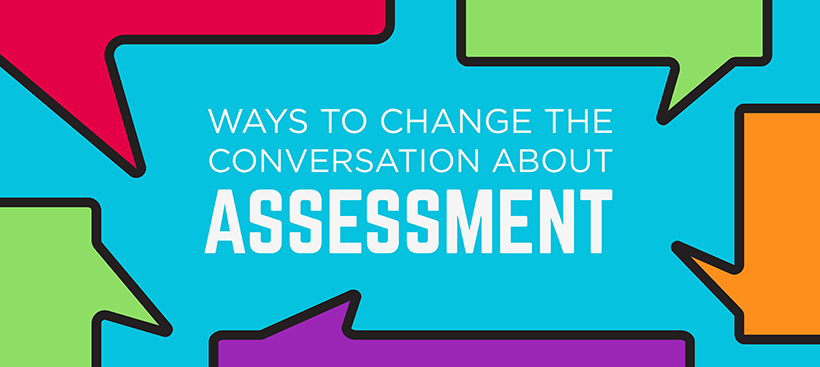From the NCTE Standing Committee on Assessment
This blog was written by Kathleen Blake Yancey, a member of the NCTE Standing Committee on Assessment.
In the previous blog I covered the use of reflection for placement into college writing courses. This practice has been one way that conversations about placement assessment have changed over the last two decades. As important, while it is focused on post-secondary writing contexts, it has the potential to influence conversations about the teaching and assessing of writing in high schools. Indeed, one of its primary features is including what students have already learned about writing in their placement decision-making.
Here, in this blog post, I consider a second type of reflection used in classrooms, one that focuses on students’ learning as they are in the midst of that learning.
REFLECTION TO DOCUMENT LEARNING AS YOU GO
A second kind of reflection is rooted in the classroom, and it’s explained by Christina McDonald, who, working with faculty colleagues across the curriculum at Virginia Military Institute, developed pedagogies supporting electronic portfolios to meet a world civilization requirement. To satisfy that requirement, each of the students creates an ePortfolio, and each artifact in the ePortfolio is accompanied by a “reflective tag,” or description, of it.
As McDonald explains in “Toward Defining a Social Reflective Pedagogy for ePortfolios,” the tags are keyed to three questions:
- What is the artifact?
- So what, or why was this a meaningful learning experience?
- Now what, or what do I need to know or do for the learning that lies ahead?
I’ve used this approach myself. In my courses, students, using free software like WIX or WEEBLY, create an ePortfolio shell within the first week or two of the course. Then, by the end of the first month, they choose the first artifact that shows their learning: it can be a text they created in a class activity, or a print homework assignment, or possibly a post they composed for our class blog. The key is that the artifact they choose has to be meaningful to them and has to be a text supporting their learning. Adapting McDonald’s approach, I ask students to complete three tasks:
- Choose one artifact that is meaningful to you and that shows your learning: describe it.
- Explain: What did you learn in creating this artifact, and how it is meaningful?
- Explain: How does this artifact and this learning set the stage for the learning that lies ahead?
Students choose three such artifacts during the term, and for each one they engage with this reflective process. Each time, they begin with a pause as they review potential artifacts and select one for its meaningfulness. In addition, of course, the task itself asks students not only to make meaning of what they have done so far, but also, and importantly, to use that experience as a way of thinking about the future.
That last task, drawing a connection between earlier learning and future learning, can be something of a struggle for students: it’s a new kind of thinking for many of them, in large part because they are so accustomed to a backward-looking reflection.
But with practice, students begin to make reflective connections that were previously invisible, and they begin to see reflection practice more generally as a platform for their own future learning. In addition, each time students include their artifacts and reflections in their ePortfolios, I have a chance to respond to their learning, to what they find meaningful, and to their plans for the future.
In sum, these new reflective practices engage students in ways both familiar and new: thinking reflectively, students place themselves in the best writing course; and thinking reflectively, students identify meaningful artifacts that point to the future as well as to the past—and in both cases, students use reflection on the past as a path into the future.
Work Cited
McDonald, Christina. “Toward Defining a Social Reflective Pedagogy for ePortfolios.” A Rhetoric of Reflection, edited by Kathleen Blake Yancey, . Utah State UP, 2016, pp. 203–26.
NCTE Standing Committee on Literacy Assessment
CHAIR, Peggy O’Neill (Loyola University, Baltimore, MD)
Josh Flores (Birmingham, AL)
Bobbie Kabuto (Queens College, Flushing, NY)
Becky McCraw (Goucher Elementary School, Gaffney, SC)
Kathryn Mitchell Pierce (Saint Louis University, MO)
Elisa Waingort (Calgary, Alberta, Canada)
Kathleen Blake Yancey (Florida State University, Tallahassee)

